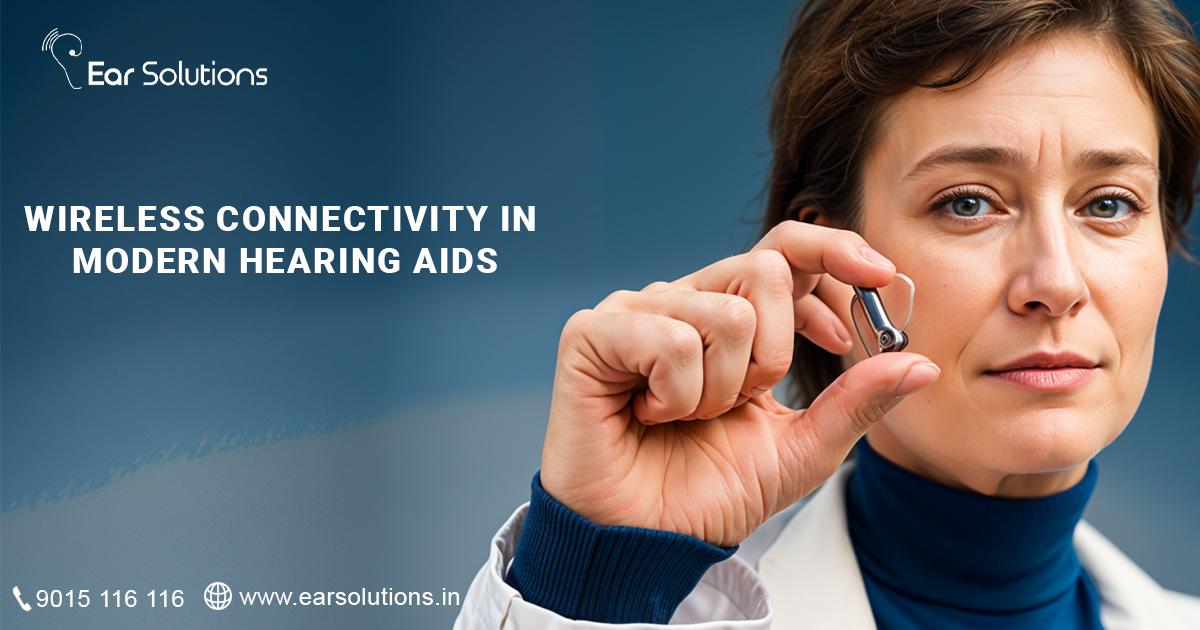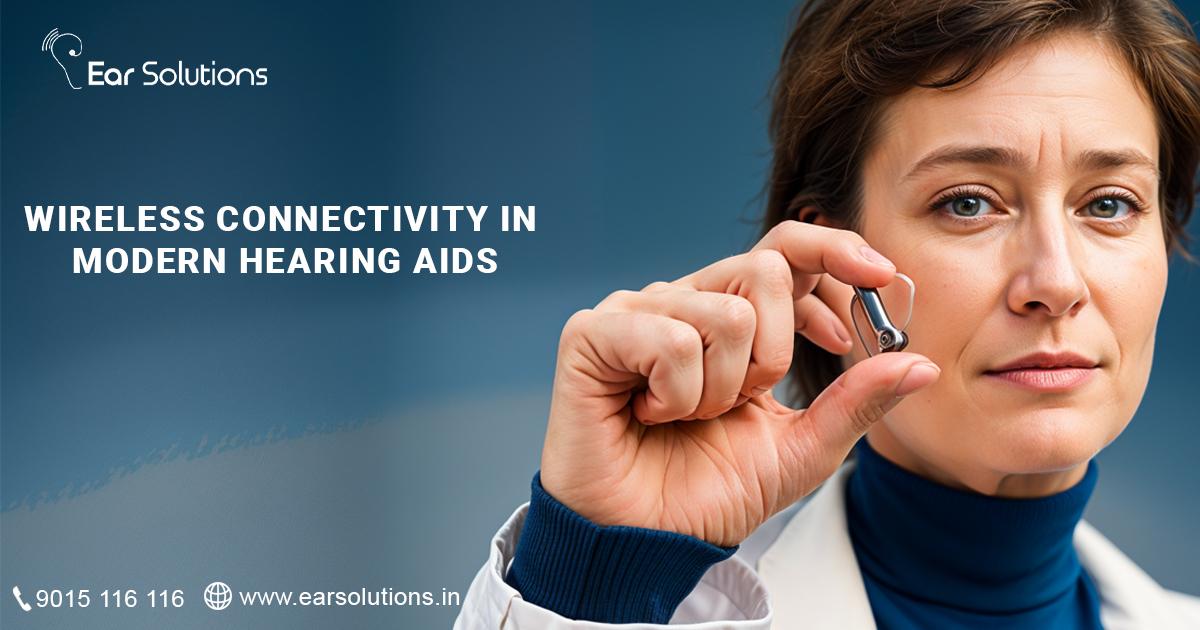Advancements in hearing aid technology have dramatically improved the lives of those with hearing loss. One of the most significant developments in recent years is the introduction of wireless connectivity in modern hearing aids. This feature not only enhances the functionality of hearing aids but also integrates them seamlessly into the digital lifestyle of users. In this blog, we will explore the benefits and features of wireless connectivity in hearing aids and how it can transform your hearing experience.

The Evolution of Hearing Aids
Traditional hearing aids were primarily designed to amplify sound, making it easier for individuals with hearing loss to hear conversations and other sounds. While this was a crucial function, it often came with limitations such as feedback, background noise, and the need for manual adjustments. With the advent of digital technology, hearing aids have evolved to offer more sophisticated sound processing and customisation options.
The latest leap in hearing aid technology is wireless connectivity. This feature leverages Bluetooth and other wireless technologies to connect hearing aids to various devices, enhancing their functionality and providing a more integrated hearing experience.
Key Benefits of Wireless Connectivity
- Seamless Audio Streaming
Wireless connectivity allows hearing aids to stream audio directly from devices such as smartphones, tablets, televisions, and computers. This means users can enjoy phone calls, music, and other audio content with high-quality sound directly through their hearing aids. For instance, watching TV or listening to a podcast becomes much more enjoyable without the need for additional accessories or devices.
- Improved Communication
Modern hearing aids with wireless connectivity enable users to have clearer phone conversations. Incoming calls can be streamed directly to the hearing aids, providing better sound quality and reducing background noise. This feature is particularly beneficial for individuals who rely on their phones for work or staying connected with family and friends.
- Remote Control and Personalization
Many hearing aids come with companion apps that allow users to control and customize their hearing experience remotely. Through these apps, users can adjust volume, change programs, and even track their hearing health. This level of control ensures that users can tailor their hearing aids to their specific needs and preferences, enhancing overall satisfaction.
- Binaural Coordination
Wireless connectivity enables binaural coordination, where the two hearing aids communicate with each other. This coordination improves spatial awareness and sound localization, helping users identify the direction of sounds more accurately. It also ensures balanced sound processing, providing a more natural hearing experience.
- Enhanced Features and Updates
With wireless connectivity, hearing aids can receive software updates directly from the manufacturer. This means users can benefit from the latest features and improvements without needing to visit their audiologist. Some hearing aids also come with advanced features such as geotagging, which allows the devices to automatically adjust settings based on the user’s location (e.g., switching to a specific program when entering a favourite restaurant).
Choosing the Right Wireless Hearing Aid
When selecting a wireless hearing aid, it’s essential to consider your lifestyle and specific needs. Factors to consider include:
Compatibility with Devices: Ensure that the hearing aids are compatible with your smartphone, tablet, or other devices you frequently use.
Battery Life: Wireless features can consume more power, so it’s crucial to choose hearing aids with adequate battery life or rechargeable options.
Ease of Use: Look for user-friendly apps and intuitive controls that make managing your hearing aids straightforward.
Professional Support: Consult with an audiologist to find the best wireless hearing aids tailored to your hearing loss and lifestyle.
Conclusion
Wireless connectivity in modern hearing aids represents a significant advancement in hearing technology. By enabling seamless audio streaming, improved communication, remote control, and binaural coordination, wireless hearing aids offer a more integrated and enhanced hearing experience. As technology continues to evolve, we can expect even more innovative features that will further improve the quality of life for individuals with hearing loss. If you’re considering upgrading your hearing aids, exploring wireless options could be a game-changer for your hearing journey.

